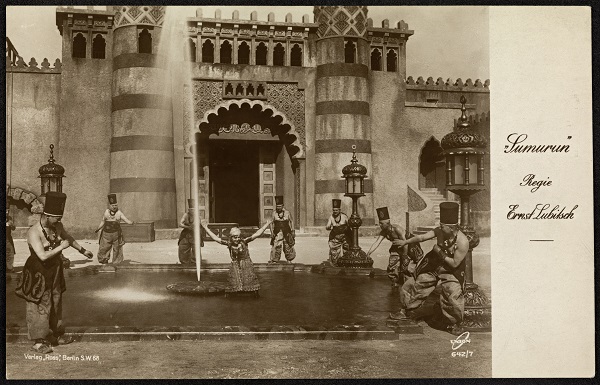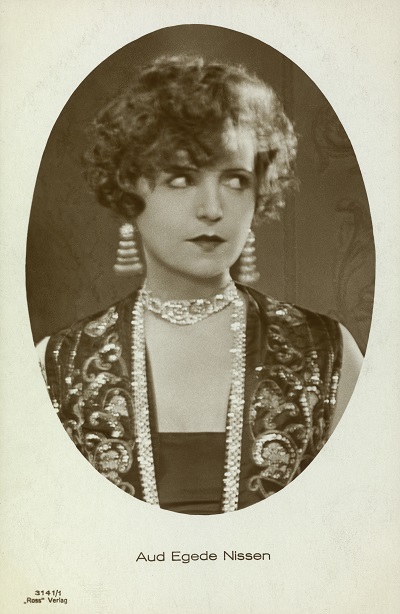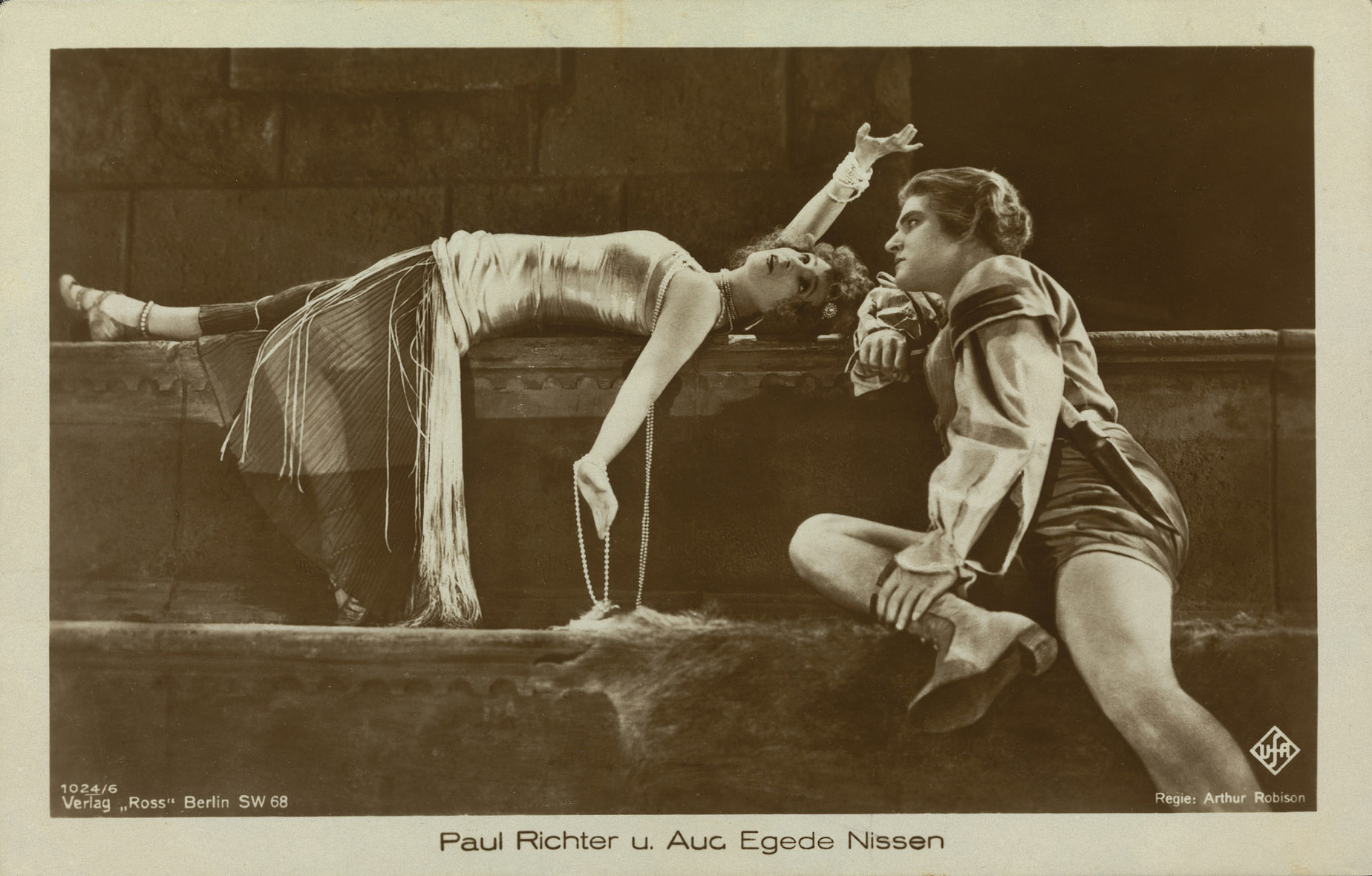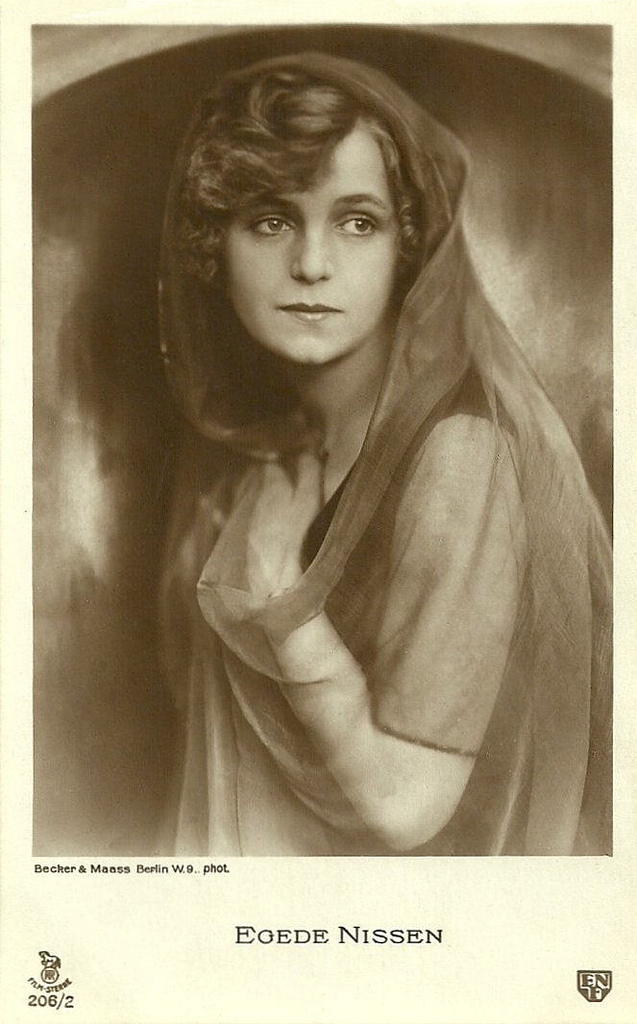On 17 February 1932, Norwegian actor and producer Aud Egede-Nissen was interviewed in the Opland Arbeiderblad paper, after she had acquired the film rights to Bjørnstjerne Bjørnson’s novel A Happy Boy/En glad gut.
One of the questions from the journalist was: “And will you yourself be directing?”
“I would certainly like to!” [answered Egede-Nissen] “But I’m not sure I’m brave enough. I directed two films many years ago in Berlin. But that’s very unusual – apparently men think that…” Then it says: “The lady quickly falls silent, and we promise not to delve any deeper into that delicate question. Even though this dewy modesty in such a highly acclaimed film actress really just makes us want to ask more questions.”
In 1932, when the interview was printed, Egede-Nissen had a successful 20-year long career in silent film behind her and had returned to Norway. In the 1920s Aud was a ubiquitous actor in the German silent film industry, with roles in such sublime works as Phantom (F.W. Murnau), Dr. Mabuse (Fritz Lang), One Arabian Night/Sumurun (Ernst Lubitsch) and The Street/Die Strasse (Karl Grune). At the same time though, paradoxically, she was a relatively unknown figure outside of the film industry, and her major international career attracted little attention or interest in her homeland. Her transnational career is probably one of the main reasons why Egede-Nissen was later forgotten and largely omitted from both German and Norwegian film history. More recently, the situation is further complicated by the fact we do not have Aud’s own voice or story about the work she put into her own company, the financial circumstances that enabled her to run the company, and what her motivation was to produce and direct films under her own name. Overall, there is very little written ‘evidence’ or first-hand testimony about what Egede-Nissen’s work behind the camera involved. This is why the brief interview in a small local paper becomes so important. Nevertheless, there remains many unanswered questions about Aud Egede-Nissen’s career, and the circumstances surrounding how the company was started, and why. But we do know this:
Aud Egede-Nissen was only 24 years old when she started her own film company in Berlin, just over a century ago in 1917: Egede-Nissen Film Compagnie GmbH. After just three years in Germany and the film industry, she had become an experienced actor and a well-established figure in Germany’s film world. Egede-Nissen’s travels to Berlin went via Copenhagen, where in 1913 she was signed on by the Danish company Dania Biofilm Kompagni. In Copenhagen, she made an important contact with Norwegian theatre man Bjørn Bjørnson, son of the author Bjørnstjerne Bjørnson, and a successful actor and director in his own right. Bjørnson had directed Egede-Nissen in her Danish silent movie debut Scenens Børn, and encouraged her to get into film and theatre in Berlin. In 1914 she moved to Berlin, and after appearing in around 30 Danish and German silent movies she started her own film company in 1917.
World War I was a crucial factor in why 1917 was an opportune time to start a film company in Berlin. Germany introduced a far-reaching ban on imports during the war, including foreign films, so the domestic market was able to virtually dominate German cinemas.
Over the course of its relatively short existence, Egede-Nissen Film Compagnie GmbH produced about 30 feature films, in which Aud and her sisters Ada and Gerd were the stars and figureheads in their own film series. Ada used the stage name Ada van Ehlers in a series of crime films in which she played the detective Miss Clever, while Gerd was the star of the ‘Gerd Nissen Master series’, and Aud had her own ‘Egede-Nissen Serie’. The company was based in Friedrichstrasse, an early focal point for film production in Berlin. The company produced films up until 1921.
The establishment of Egede-Nissen Film Compagnie reflected the trend across the Atlantic in American silent movies in the 1910s, which film researcher Karen Ward Mahar has referred to as ‘star-name companies’. In these star-name companies, women actors started film companies under their own name, thus assuming an active producer role within their own firms, their personal star status being an important selling point on the film market. There has been little research into whether German or other European star-name companies worked in the same way, but there were certainly other women actors in Berlin in Egede-Nissen’s day who started their own companies, including Asta Nielsen and Fern Andra. We can assume that the same synergetic effect was present in the German film industry, where women with their own companies had greater control over creative processes, while the branding aspect of their own famous names gave the films an important commercial potential that helped them to stand out in the film market.
One question that arises when assessing whether Egede Nissen Film Compagnie fits into the category of star-name company is, of course, whether there is evidence that in 1917, Egede-Nissen actually had the status of film star in Germany, having only been in the country and the industry for three short years. Or was it, perhaps, starting her own company that made it possible for her to become a film star? There is, however, no doubt that Aud did become a star of German silent movies in the 1920s, both by virtue of her collaboration with directors who were already big names at the time – Ernst Lubitsch, F.W. Murnau and Fritz Lang – but also through the many, diverse roles she played, with some 100 features in her filmography. In addition, there are many film-star postcards featuring Aud Egede-Nissen for sale on the internet and at flea markets, which fans in Germany and the rest of Europe can buy. Moreover, the fact that her films reached far afield is evidenced by her films now being found in archives all across Europe, North America and even Russia, as well as a few South American countries.
One complicating factor when exploring historical documents is that many women operated under several names. This was also true of Aud Egede-Nissen, who during the course of three marriages carried the surnames Lüddeckens, Richter and Havrevold, and her maiden name was also often combined with one of these. It is therefore not easy to know where to start looking for information about someone who has left behind no archival material of her own – be it personal correspondence, notes or memos of any kind, or more official documents related to her long-lasting career in the German silent film era.
Nor is it easy to know which name or names archivists, librarians, journalists or film historians have used when cataloguing or referring to a person who has had so many names. The same problem arises when looking for information in other, secondary sources – interviews, books or archives relating to people who were known to be in Aud’s circle, or with whom she worked. Which names have they used when telling stories that may have included references to Aud Egede-Nissen?
The German filmography Deutsche Stummfilme, compiled by director and archive entrepreneur Gerhard Lamprecht, does include most of the films by Egede-Nissen Film Compagnie, but it is not clear what material Lamprecht used when listing information about people involved in the productions. It is, however, certain that the lists largely ignore Aud Egede-Nissen’s input in these productions, beyond her capacity as an actor. Even so, we might assume that Aud produced the films her company made. Indeed, exactly what being a producer entailed may be quite different from what we associate with the job title today. In her book on women film producers Silent Women, Pioneers of Cinema, Shelley Stamp reveals that a producer’s job description often involved casting, location management, scriptwriting and editing. Producer was also often the title used for women who had directorial responsibility, since the industry’s terminology had yet to evolve and was not as closely defined as it is today, 100 years later. To corroborate Aud’s role as a producer – and perhaps far more – there is an interesting mood sketch in a portrait of Aud Egede-Nissen which was printed in the Ukens Revy newspaper in 1918. Journalist Jonas Lie Jr. was visiting the film company offices, and reported his impressions as follows:
“Two storeys of the large business premises are taken up by the company’s offices and workshops. The walls are covered with film posters and photographs, and there are reels of film stacked all over shelves and tables. In the copying area, large wooden cylinders revolve slowly to dry out the wet film. Everywhere there are acids and film reels, and the long film reel is moistened and pressed, lit and dried, and it is quite impossible to understand the intricacies of the process (…) Heavily loaded trolleys swing into the high gate, postal couriers and errand boys run up and down the stairs, the copy area is a hive of busy people in overalls with light-blue, chemical-dyed hands, while in the offices there’s never-ending talk of film, which turns one giddy. (…) all of this buzzing hive of activity is directed and managed by one will, one person – Aud Egede Nissen.”
The brief press items tell us a lot about women’s work in the silent movie industry, including the obstacles that made it hard for them to have various roles behind the camera. But while it serves as a depiction of her relatively grand visions and thwarted ambitions, the interview quoted early on in this article clearly suggests that Aud Egede-Nissen directed at least two films. If this is true, then Norwegian film history can be rewritten.
(Translated by Matt Bibby)



